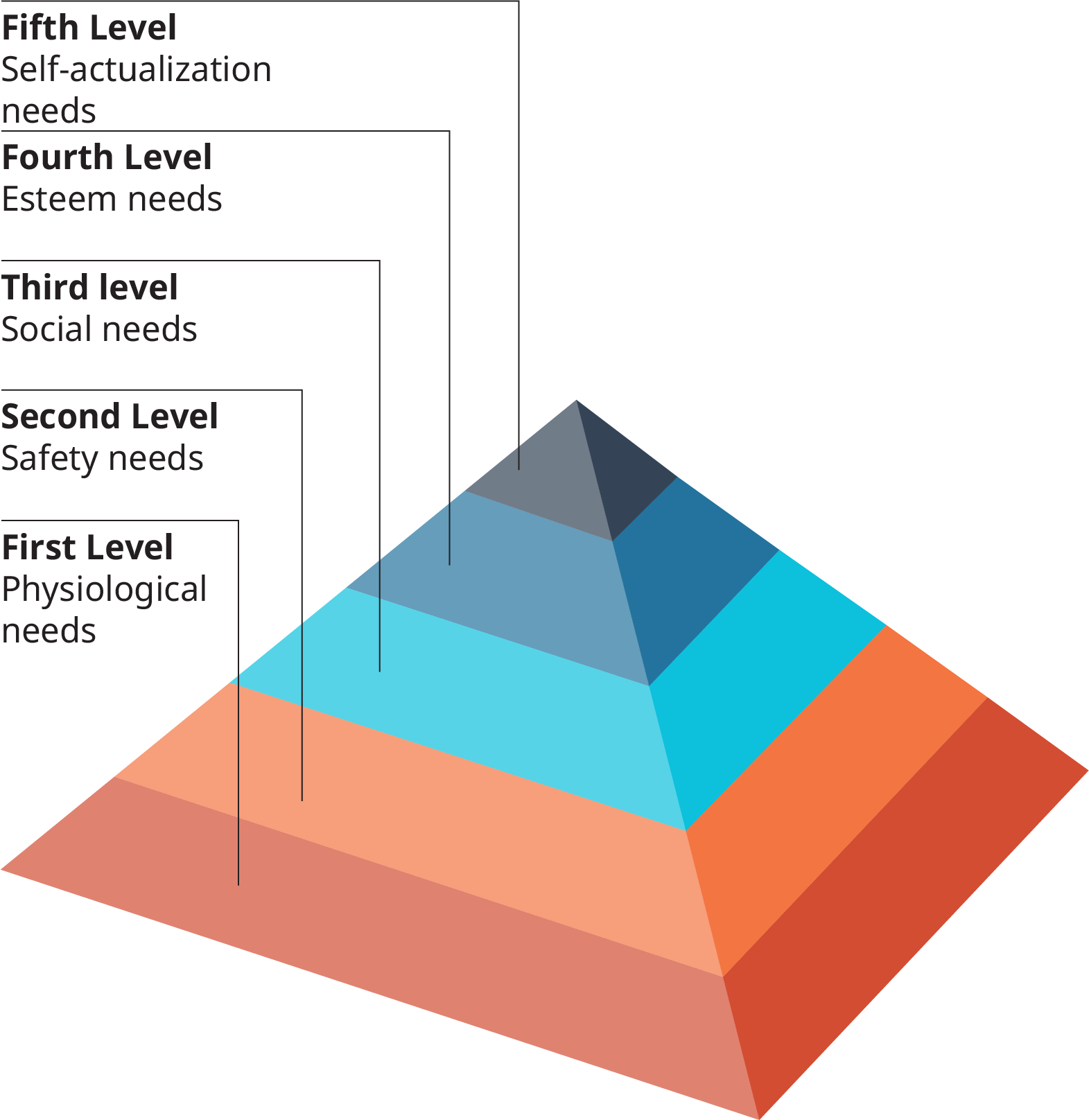In today’s remote work landscape, fostering employee motivation has never been more crucial. With team dynamics shifting and mental well-being taking center stage, organizations must find effective strategies to support their workforce. Enter Maslow’s Hierarchy of Needs—a timeless framework that not only identifies the essential human needs but also offers actionable insights for today’s workplace. By understanding and addressing these needs, you can create an environment where employees feel valued, secure, and empowered to reach their full potential.
In this blog, we’ll explore how applying Maslow’s theory can transform your workplace culture, drive productivity, and elevate your employees’ overall satisfaction. Whether you’re in HR, management, or simply passionate about enhancing the work environment, this guide will equip you with the knowledge to implement Maslow’s principles effectively. Get ready to take your team’s motivation to new heights!
What is Maslow’s Hierarchy of Needs?
When we talk about this theory, we talk about humans and their minds. That’s what Abraham Maslow had in mind. He carved out five essential needs that motivate human beings. Let’s talk a little about those in detail here to understand what Maslow’s Hierarchy of Needs is.
These needs are in a specific order. The ones that we are listing first are the ones that are most basic and come at the bottom, and then we go higher from there.
Physiological Needs
This one is the most basic need that a human wants. This includes a stable life and lifestyle in the form of a job, regular income, comfortable home, food, water, etc. Our physiological needs are fulfilled by the availability of the most basic resources.
Safety Needs
Our safety needs go a level above our physiological needs. Just having a regular income doesn’t do, but, having a job contract that protects that regular income and rights, is a safety need.
Social Needs
Aristotle stated, ‘Man is a social animal.’ This went on to become the pillar of human nature and even economies around the world. Physiological needs are dependent on self, whereas social needs come from an external space such as friends, comfort, and love.
Self-Esteem
This is where humans rise up the psychological needs ladder to actually embrace their individuality. But, self-esteem is a basic need and people need it to feel good and confident about themselves. Lack of self-esteem can lead them down a deteriorating mental health stage that affects both personal and professional aspects of their lives.
Self-actualization
This is a stage of self-fulfillment that goes a step further than advanced self-esteem. Self-actualization is when the person is fulfilled in what they are doing, in personal, professional, and basically all spheres of life. It’s the zenith of the hierarchy of needs.

The Maslow Pyramid is all about basic human needs. It is a pyramid of needs. Of course, human behavior is dynamic and there is no set template to define it. That being said, this does give out a basic picture of what is important and in which order.
But, how does this theory translate to the work environment? More importantly, how relevant is Maslow’s Hierarchy of Needs in the workplace? Let’s find out.
How to Apply Maslow’s Hierarchy of Needs in the Workplace?

An employee needs change depending on their designation. A fresher has a different professional perspective and an experienced manager has something different to say. That’s why Maslow’s Hierarchy of Needs in the Workplace also differs as per the workspace hierarchy.
Consider it this way, an employee who is no longer concerned with a particular tier of the pyramid of needs moves up the ladder. This, more often than not, is directly related to an employee’s position in the organization.
An employee who has just started their career would be mostly looking at the tiers that rest at the bottom; physiological and safety needs. This stems from the fact that what they are looking for is security regarding their basic needs and a safety net of a stable work environment. Whether or not that work environment is emotionally comfortable can be something they want but not exactly what they need or would look out for. On the other hand, someone who is at a little higher level would have mostly got both these needs taken care of, so, they will be concerned with the next tier, that of social needs and self-esteem.
Let’s take a look at Maslow’s Theory of Motivation or Maslow’s Hierarchy of Needs, level-wise.
Pyramid of Needs for the Lower-level Employees
The start of a career is defined by uncertainties and confusion. As a result, the main goal is not to find a job that fulfills passion, but rather one that can help pay the bills. This is a part of what we call physiological needs. Physiological needs in Maslow’s Pyramid of Needs refer to the basic human needs such as earning well enough to be able to afford decent accommodation and have access to food, water, sanitation, etc.
The entry-level employees are the ones who are concerned with these needs. Alternatively, these are also the needs of employees who may have been caught by an element of surprise in the form of job termination or a global recession. Physiological needs become a concern when there is an element of scarcity. The employees are either starting or they are starting again.
When you think of using Maslow’s Hierarchy of Needs to motivate employees of lower levels, you have to think of the following points.
- Act humane, especially in cases such as job cuts
- Consider if any policy is going to threaten the employees
- Establish interpersonal relationships and reward them as well
- Do not keep the employees in the dark about company policies
- Balance employee rewards and perks to keep them motivated
- Managers should be trained to implement all of the above and more
The point of implementing the pyramid of needs at work is to push the employees towards the next stage. When you push the lower-level employees and motivate them as per Maslow’s philosophy, you are shifting them from the point of needing physiological and safety nets to the point of security, and eventually self-actualization as they recognize and acknowledge their self-esteem.
Pyramid of Needs for the Higher-level Employees
Now that we have talked about how Maslow’s Hierarchy of Needs in the workplace affects the employees at the lower rung, it’s time to talk about those at the higher level. What do the higher-level employees feel about their needs? Are they stagnant and satisfied or are they willing to grow further? In the latter, where they wish to know more, grow more, and eventually be happy with their self-growth, they need motivation. Applying Maslow’s Hierarchy of Needs in the workplace can do that.
Self-esteem and self-actualization are higher-level needs. This is because the employees at this level have already received stability and safety in their professional environment. These are experienced individuals who know what they are doing and know how to use their skills to sell the vision and mission of the organization. But, what next? There are very few individuals who are self-motivated, enough to bring something innovative to the table.
Your higher-level employees want something more and this something is them finding their own professional niche. This happens when they discover how they can utilize their self-esteem to reach the level of self-actualization.
Here are a few ways in which you can apply Maslow’s Hierarchy of Needs in the case of higher-level employees.
- Perks are fine but make the work more rewarding
- Include the employees in the decision-making
- Pay special attention to their designation and job description
- Symbolism works, so make it a point to give them a nice corner office and other perks
- Give them the chance to reward their teams and employees
- Let them manage projects and teams rather than micromanaging
- Enroll them in Employee Development Programs that refines their skill
- Nurture and train them as role models
You have to understand that the best way to motivate higher-level employees is by steering them towards the highest tier of Maslow’s Hierarchy of Needs, i.e. self-actualization. This is done by boosting their self-esteem, which is affected by all of the things mentioned above and more.
The Benefits of Applying Maslow’s Hierarchy of Needs in the Workplace
We have talked enough about the theory itself, how it works, and how you can apply it to motivate employees. But, what benefits does it bring?
Firstly, the theory streamlines your work as an HR in knowing exactly how to manage the human resources in the organization, enough to help them be better and work better. There is no set template to manage the dynamics of human nature, but a format always helps, with a few tweaks here and there, and being open to exceptional scenarios.
Here are the benefits that applying Maslow’s Hierarchy in the workplace brings along:
- Employees feel safe and secure at work
- It inculcates team spirit
- It improves the management capabilities of those at the higher-level
- Applying this theory at work increases the employee retention rate because they feel wanted
- It increases the overall productivity across all organizational levels
Overall, Maslow’s theory helps lower-level employees become secure in their job and be better managers when the time comes. Simultaneously, it helps higher-level employees be better managers, transforms them into role models, and pushes them to be better versions of themselves.
Applying Maslow Theory of Motivation in an organization has many benefits. You only have to think of how you can do it the best way possible.
Are There any Limitations to Maslow’s Hierarchy of Needs?
Theories are accurate, the application is not. It stands true for Maslow’s theory as well. While on paper there are many advantages, does it actually work in real life? The answer is both yes and no. Yes, it does work, but it also has some disadvantages.
- There is no way to measure human satisfaction
- Concepts like self-esteem and safety are too broad and the definition and application change according to cultures, demographics, and other factors
- There is no empirical backing on how the needs are ranked
- Self-actualization is different for different people
But, are the limitations great enough to outdo the merits? It depends on how well you can understand and implement it.
Do you Need Maslow’s Hierarchy of Needs in the Workplace?
There’s the million-dollar question. Maslow’s Hierarchy of Needs is one of the many theories that are out there. How successful it is going to depend on the person who implements it.
Understanding Maslow’s Hierarchy of Needs can help leaders foster a more motivated, engaged workforce. According to Maslow, basic human needs are ranked in a pyramid structure, beginning with physiological needs—the essentials for survival—at the bottom. Safety needs come next, followed by social needs for connection, and then esteem needs. The top levels of Maslow’s hierarchy include the needs for self-actualization and self-transcendence—the ultimate aspirations for personal growth.
This framework, sometimes called Maslow’s law pyramid, shows that physiological needs must be met before individuals can focus on higher needs. In the context of business, this theory can highlight how meeting each level of need, from security to recognition, provides the foundation for maximizing potential, increasing employee loyalty, and driving performance. While limitations of Maslow’s theory do exist, like its rigid hierarchy, the advantages of Maslow’s hierarchy remain compelling for organizations looking to unlock deeper levels of motivation and satisfaction across their teams.
But, if you implement it quite well and have the intuitive gaze that can identify an employee’s psyche from the way of working and behavioral ethics, this is a theory you can test.
Have you tried the pyramid of needs at your workplace?





